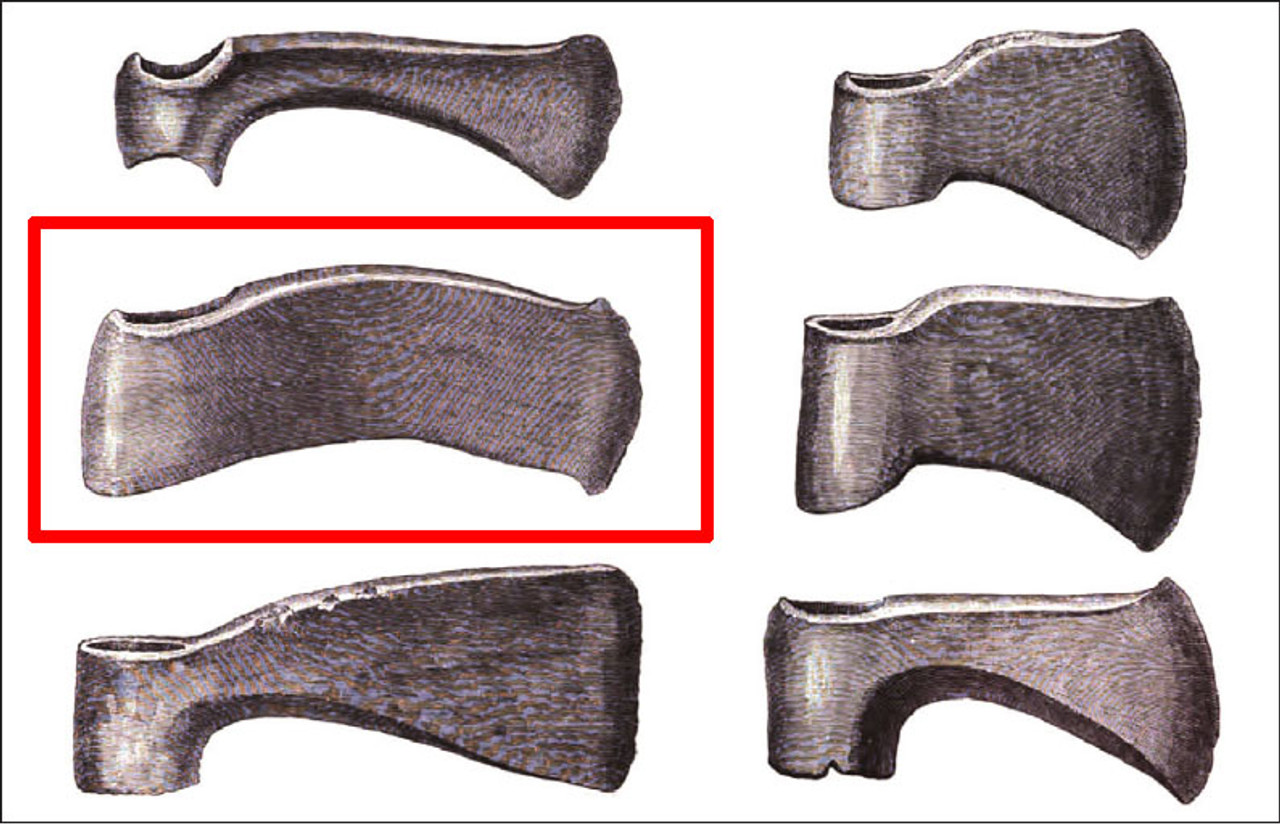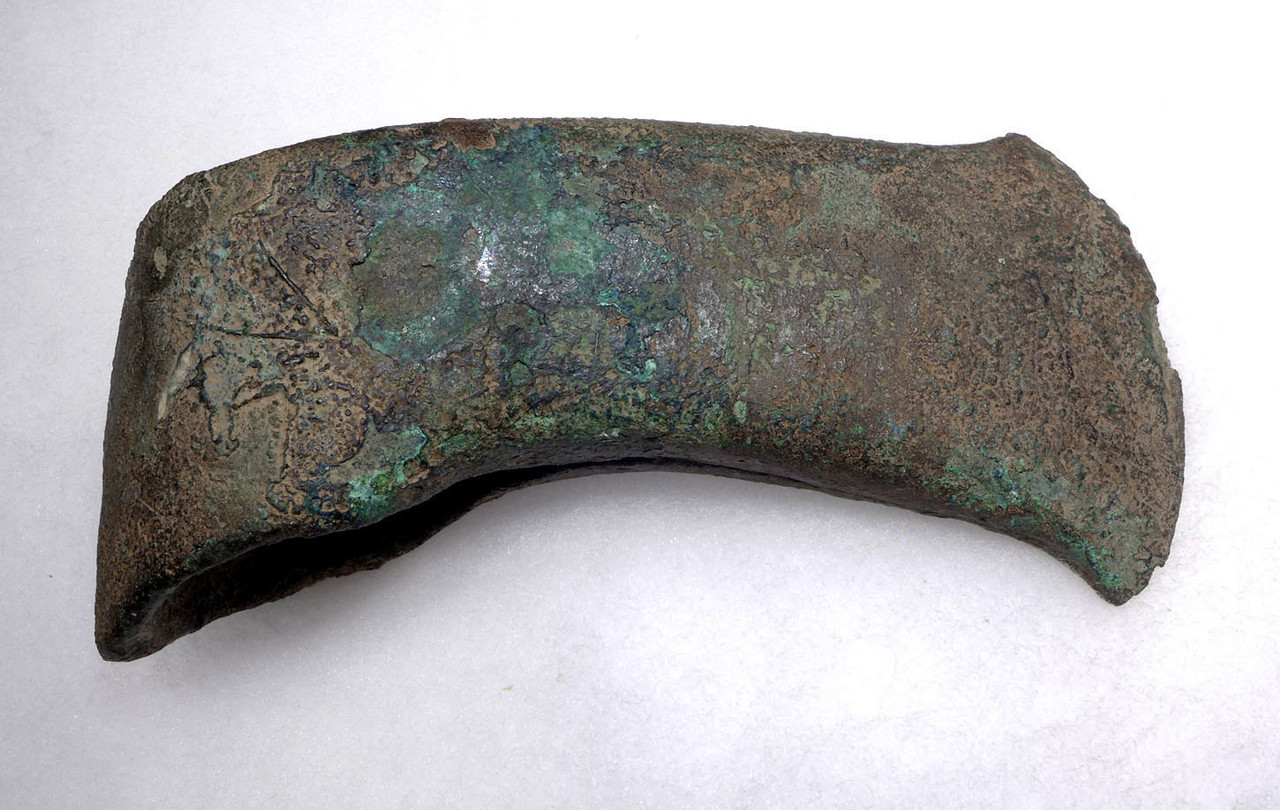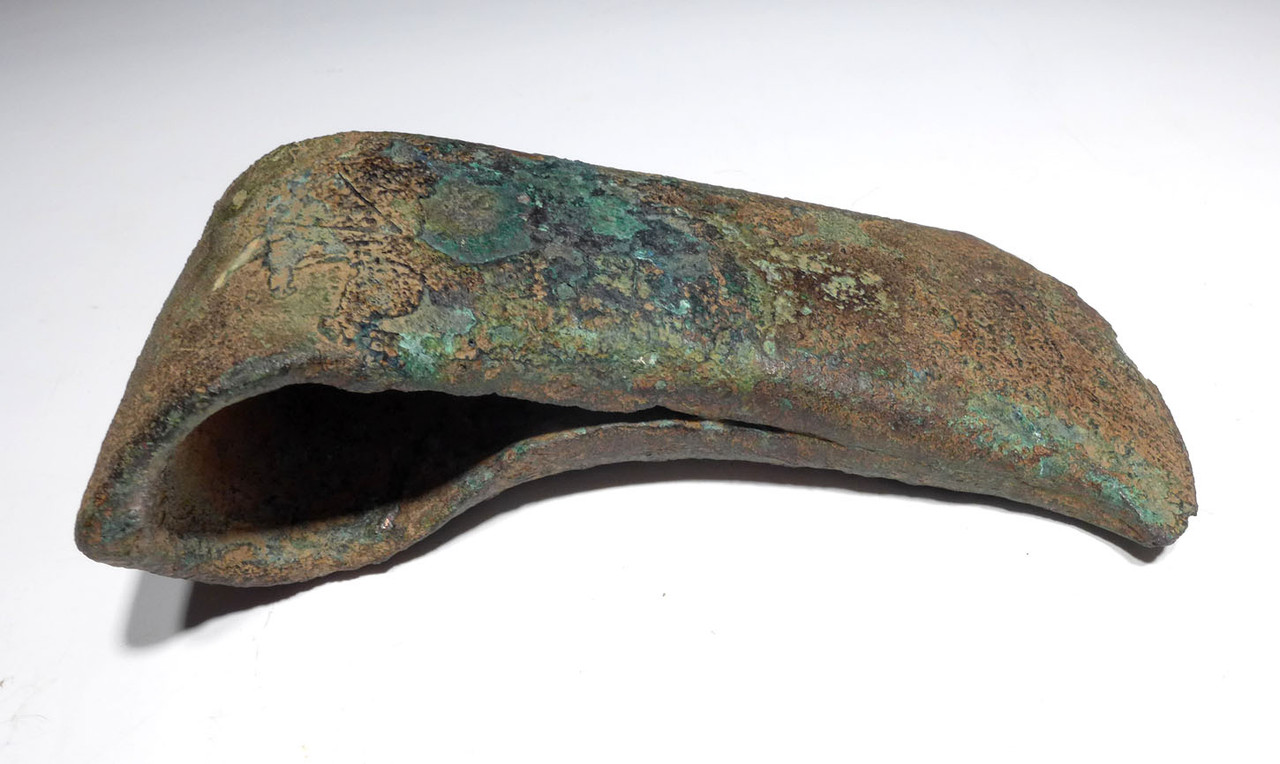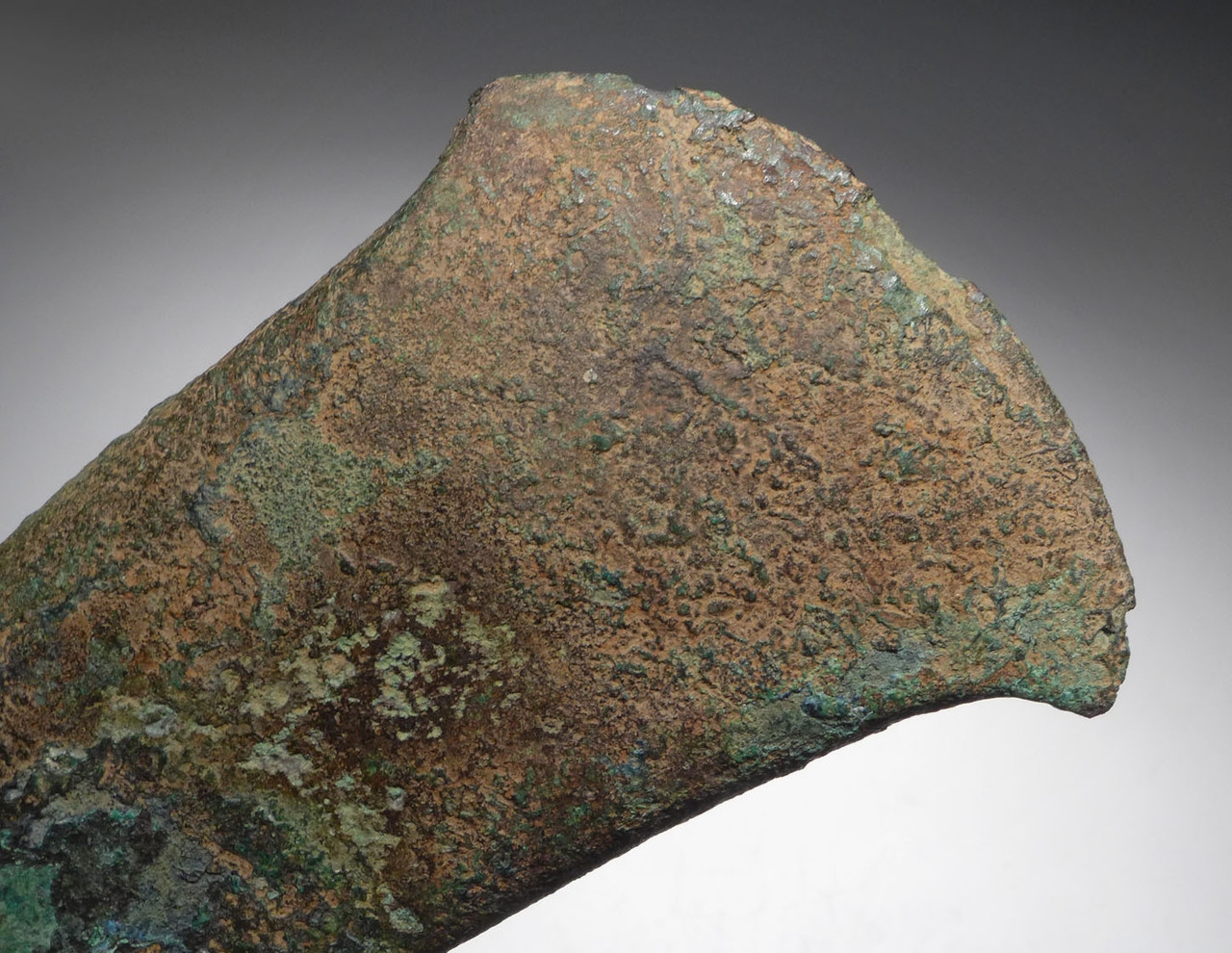Product Description
SEE MORE CHALCOLITHIC COPPER AGE ARTIFACTS
Chalcolithic warfare is the first documented accounts of military conflict. Despite assumptions that earlier conflicts took place in Prehistory, scientific evidence of actual combat FIRST exists when metal was used in tools and weapons. This RARE Chalcolithic copper shaft-hole axe was found in the Balkan region of Europe, and comes from the Balkan Chalcolithic (Copper Age) Culture, Europe's FIRST and OLDEST use of metal. While ANY copper tools from this first era of metal use are rare, those that have obvious war and combat use design are EXTREMELY RARE. They represent the very first existence of metal weapons in human history.
In the rare Balkan Chalcolithic collection we acquired, there were only TWO actual war axes - axes that clearly were designed for combat and not utilitarian purposes. This is one of those two, and was the LARGEST AND ONLY SHAFT-HOLE AXE. This is an EXTREMELY RARE Chalcolithic shaft-hole war axe. An identical specimen can be seen in this scientific paper here, Figure 1, Specimen #2. The heft and size of this axe is truly intimidating. In an age when stone tools were still dominating the scene, imagine appearing on the battlefield with an axe like this up against much more primitive weapons. When copper first arrived on the technology scene, anything made with copper was a luxury and extremely costly. The heavier and larger the object, the more rare and costly it would have been. An axe of this weight and size would have been the zenith of luxury and combat effectiveness as one single blow to an enemy's body with this axe would have been fatal or at least, crippling. The weight alone could have crushed a skull or broken any major limb bone. The sharp cutting edge would have been extremely effective in inflicting the most severe injuries, far worse than any stone weapon of its time. This large copper Chalcolithic war axe would have been a terror weapon to any enemy up against it, and those who carried it would have had a huge advantage on the battlefield. This copper axe features exceptional form and workmanship, definitely the work of a master Chalcolithic metalsmith, and an extreme luxury item in a time when flint tools still dominated civilization!
The large shaft-hole indicates it would have been mounted on a handle that might have been wielded with two hands. The surface is heavily encrusted with ancient deposits and original sediment. It is uncleaned and 100% as found with no alteration, repair or restoration of any kind. Of all the ancient metal weapons we have offered in the last 24 years, this most certainly would classify as one of the RAREST, AND DEFINITELY THE OLDEST!
This is a very scarce example of THE EARLIEST war axe after the invention of the use of metal. This axe is 100% original as it was found, and would make a VERY RARE and unique addition to a well-rounded collection of the earliest weapons of human history in the world as IT PREDATES ALL BRONZE WEAPONS!
This huge milestone in human tool technology originated in the Balkans around 5000 BC. With tin bronze objects dated in the Balkans to just before 4000 BC, the Chalcolithic Period was rather brief in history, much shorter than the Bronze or Iron Ages. Because of this, true Chalcolithic tools and weapons ARE VERY RARE! Not only is the Balkan Chalcolithic the first time metal was used in Europe, the oldest gold jewelry in human history dates to the Balkan Chalcolithic by the discovery of the Varna Necropolis in Bulgaria.
While much less valuable copper Chalcolithic tools can be found on the market from later period Near Eastern regions, more valuable, older specimens come from the Balkan Chalcolithic and are rarely seen or available for private acquisition. The few Balkan Chalcolithic objects we have all came from the same small private German collection we acquired over 20 years ago. Once sold, we will never have this opportunity to offer them again. They are among the rarest metal artifacts we could offer.
HISTORY
The Chalcolithic (also called the Copper Age and Eneolithic) is an archaeological period characterized by the increasing use of smelted copper. It follows the Neolithic and precedes the Bronze Age. It occurs at different periods in different areas of the world, and is absent in some parts of the world, such as Russia. Stone tools were still predominantly used during this period.
A copper axe found at Prokuplje, Serbia contains the oldest securely dated evidence of copper-making, from 5500 BC (7,500 years ago). The find extends the earliest known record of copper smelting by about 800 years. Knowledge of the use of copper was far more widespread than the metal itself. The European Battle Axe culture used stone axes modeled on copper axes, even with mold casting lines of the copper axes replicated by carving as designs in the stone examples.
The Gumelniţa–Kodžadermen-Karanovo VI complex was a Chalcolithic cultural complex of the fifth millennium BC located in the eastern Balkans, comprising the Gumelnița, Kodžadermen and Karanovo cultures. It is also aggregated with the Varna culture. The Varna culture was a Chalcolithic culture of northeastern Bulgaria, dated c. 4500 BC, contemporary and closely related with the Gumelnița culture. The oldest golden artifacts in the world (4600 BC - 4200 BC) were found in the Necropolis of Varna.
Ötzi the Iceman, who was found frozen and emerging from a melting Ötztal Alps glacier in 1991, and whose remains have been dated to about 3300 BC, was found with a Chalcolithic copper axe. To see how these earliest of metal tools were used, see video above.
 US DOLLAR
US DOLLAR
 EURO
EURO
 AUSTRALIAN DOLLAR
AUSTRALIAN DOLLAR
 CANADIAN DOLLAR
CANADIAN DOLLAR
 POUND STERLING
POUND STERLING






















